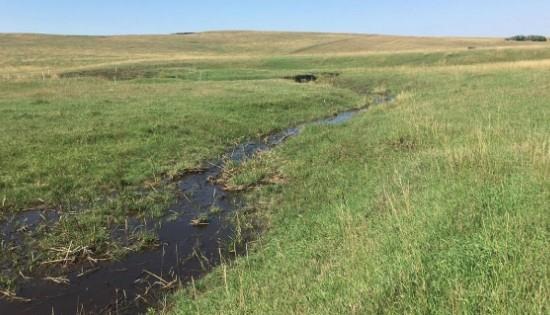By Sean Kelly
With fall grazing on the horizon, nearly all of South Dakota is still experiencing drought conditions. Regardless of where your ranch is located, a rancher must be very careful when grazing the fall green-up of cool-season grasses.
Cool-season grasses have two growing seasons (Figure 1). They grow in the spring and early summer and then get another growth spurt in the fall.

Figure 1. Warm-season and cool-season growth curves.
Warm-season grasses grow later in the season during the summer and late-summer and do not get another green-up in the fall of the year.
Extreme diligence must be taken not to overgraze during the fall green-up of cool-season grasses.
During the fall green-up, cool season grasses are storing their energy reserves to ensure health through the dormant season and vigor next spring when the growing season starts again (Figure 2).

Figure 2. Fall green-up of cool-season pasture in Tripp county during drought year of 2017.
Tremendous damage to cool-season grasses can happen if they are overgrazed during the fall green-up, and they are unable to build those root reserves. The plant will have less vigor next spring and may die out completely during the dormant season.
Native cool-season grasses should not be grazed shorter than four to six inches in plant height. Also, by leaving sufficient plant height into the dormant season, the soil surface will be protected from erosion, and snow capture during the winter is optimized.
Source : sdstate.edu